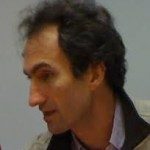Link to Pubmed [PMID] – 27662900
Genome Res 2016 11; 26(11): 1555-1564
Legionella pneumophila is an environmental bacterium and the leading cause of Legionnaires’ disease. Just five sequence types (ST), from more than 2000 currently described, cause nearly half of disease cases in northwest Europe. Here, we report the sequence and analyses of 364 L. pneumophila genomes, including 337 from the five disease-associated STs and 27 representative of the species diversity. Phylogenetic analyses revealed that the five STs have independent origins within a highly diverse species. The number of de novo mutations is extremely low with maximum pairwise single-nucleotide polymorphisms (SNPs) ranging from 19 (ST47) to 127 (ST1), which suggests emergences within the last century. Isolates sampled geographically far apart differ by only a few SNPs, demonstrating rapid dissemination. These five STs have been recombining recently, leading to a shared pool of allelic variants potentially contributing to their increased disease propensity. The oldest clone, ST1, has spread globally; between 1940 and 2000, four new clones have emerged in Europe, which show long-distance, rapid dispersal. That a large proportion of clinical cases is caused by recently emerged and internationally dispersed clones, linked by convergent evolution, is surprising for an environmental bacterium traditionally considered to be an opportunistic pathogen. To simultaneously explain recent emergence, rapid spread and increased disease association, we hypothesize that these STs have adapted to new man-made environmental niches, which may be linked by human infection and transmission.







